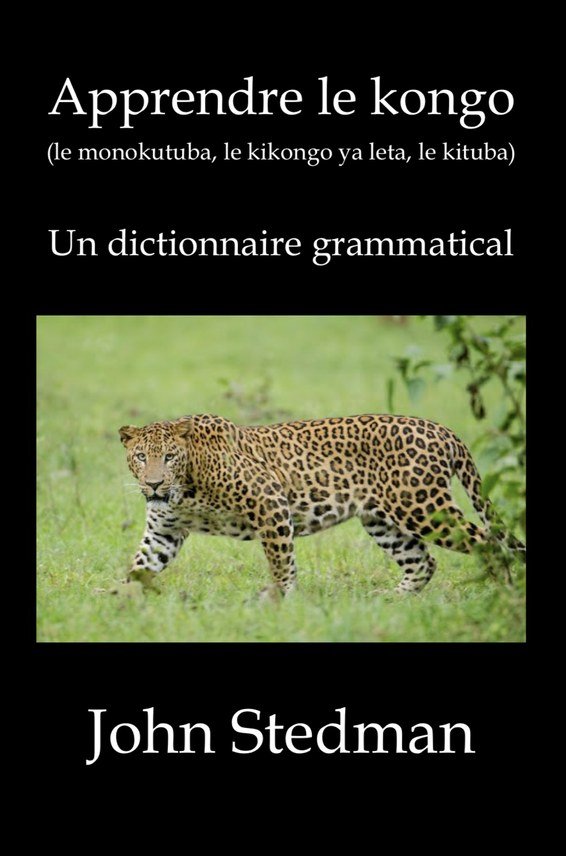
Our Books
In 1993, John Stedman, a monolingual Englishman, volunteered for humanitarian work. Much to his surprise, he and his wife, Sharon, were assigned to Côte d’Ivoire, in West Africa, a country they had never heard of on a continent about which they knew almost nothing. What they learned there – and later in the Democratic Republic of Congo (Congo-Kinshasa) and the Republic of Congo (Congo-Brazzaville) – changed their lives forever, and sparked a lifelong love of the people, languages and culture of the continent.
Like most English schoolchildren, John never learned the grammar of his own language. In fact, he was not absolutely sure what grammar was. Even though he attended a grammar school. The concept of multilingualism was totally alien to him, but over the twenty-five years spent as a linguist and lexicographer in various African countries and among the African diaspora in Europe, he became fascinated with the relationships between language, culture, history and ethnicity.
His books explore some of the languages spoken in Congo, the interface between the colonial and vernacular languages, the dangerous concept of linguistic superiority and the connections between the languages we speak and our view of the world.
Now living in Germany, John and his wife, Sharon, specialise in teaching accelerated language-learning techniques.

The Language Secret has already published books ranging from specialised dictionaries to general guides to language learning.
-

The Language Secret
“What do you call someone who speaks three languages?”
“Trilingual”
“What do you call someone who speaks two languages?”
“Bilingual”
“What do you call someone who speaks one language?”
“English“
The author first heard this joke in Africa, where he frequently met people who spoke eight, nine or ten languages. Most of these people would not consider themselves remarkable in any way. Some of them could not even read. But, unwittingly, all of them had stumbled upon The Language Secret. And it is our pleasure to reveal it to you in this book.
We show you the principles that apply to learning all languages, any language, The Language Secret.
-

Congo: A Story in 26 Words
Congo. One name. One mighty river. Two countries. A combined surface area greater than that of the whole of Western Europe. 250 languages. Infinite complexity.
In the 2011 edition of the Human Development Index, the Republic of Congo was listed in 137th place. Its neighbour and near namesake, the Democratic Republic of Congo, was last of all: 187th, behind such bywords for chaos and conflict as Afghanistan, Syria and Yemen.
What is it like to live in these countries? How to make sense of their complex history, language, society and culture? This book attempts to do just that through the eyes of an English couple who were living in Congo at that time, using 26 words taken from the languages spoken there to examine the realities of life in places that rarely impinge on Western consciousness.
-

Lingala
One of the most Lingala is spoken by tens of millions of people in Central Africa and has the status of a national language in the Democratic Republic of Congo and the Republic of Congo. It is an expressive and dynamic language, both complex and relatively easy to learn, thanks to the internal logic of its structure. It has become the lingua franca in a large part of Africa, far beyond the borders of the two Congos, thanks in part to the great success of Congolese music.
Because of the particular structure of the Bantu languages, which is totally alien to the logic of European languages, a traditional dictionary is of little use to those who are taking their first steps in learning Lingala. Indeed, most of the words of a Bantu language are not found in dictionaries designed according to the Indo-European model. This new dictionary has therefore been conceived according to a system which helps beginners and advanced speakers to discover the logic of the Bantu language system.
-

Kongo
Kongo. One of the major linguæ francæ spoken in Central Africa. Monokutuba, Kikongo ya Leta and Kituba are three variants of one and the same language that some specialists call Kongo. This grammatical dictionary contains detailed explanations which show both the similarities and the differences between the three dialects. This book – both a dictionary and a grammar, and the very first of its kind – is the result of more than twenty years spent in the two Congos as well as with the Congolese diaspora in Europe.
The Kongo speech area extends from Pointe Noire on the Atlantic coast of the Republic of Congo to the eastern part of the former province of Bandundu in the DRC, a distance of more than a thousand kilometres. It is therefore not surprising that differences have been created between the variants of the language spoken at the two extremes of this vast area, especially since a linguistic “island” – that of Kinshasa Lingala – is located in the middle.
